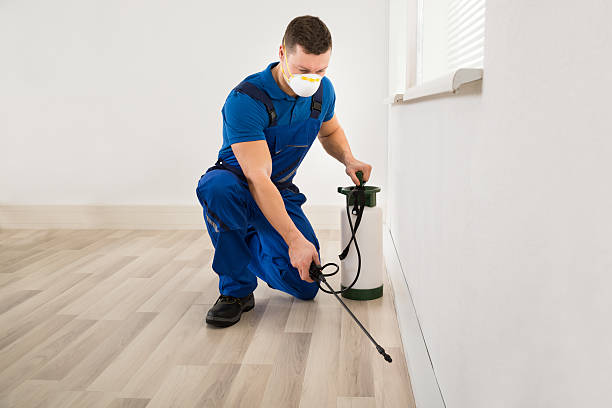Expert Insect Control Techniques for Long-Term Results
Expert bug control methods encapsulate a detailed technique that starts with a detailed evaluation and evaluation, adhered to by precise parasite recognition to comprehend their behavior patterns. The implementation of Integrated Pest Management (IPM) principles, combined with eco-conscious therapies, creates the cornerstone of sustainable bug removal.
Examination and Assessment
Upon going into a property for pest control solutions, the first step is a detailed assessment and assessment to recognize the level of the invasion and determine the most efficient therapy plan. Expert insect control technicians are trained to meticulously examine the properties, looking for signs of insect task such as droppings, chomp marks, nests, or any structural damage. They will likewise examine the problems that might be bring in pests, such as food resources, water leakages, or entry factors.

Insect Recognition and Habits

Additionally, comprehending the habits of the determined bug is essential to carrying out effective control procedures. Recognizing where bugs nest, what they feed on, and their activity patterns can aid pest control professionals create approaches to remove them efficiently.
Integrated Bug Management (IPM)
Integrated Insect Management (IPM) strategies combine multiple techniques to control and protect against bug invasions in a sustainable and ecologically friendly manner. exterminator. By incorporating approaches such as biological control, environment adjustment, modification of cultural practices, and making use of resistant selections, IPM aims to reduce making use bug pest control of chemical pesticides
One of the key concepts of IPM is the emphasis on avoidance. This aggressive strategy includes surveillance pest populaces on a regular basis to discover any possible concerns before they rise. By recognizing parasite issues early, pest control actions can be carried out quickly and efficiently.
Additionally, IPM promotes the usage of non-toxic bug control approaches whenever feasible. This can include utilizing natural predators of the pests, presenting beneficial bugs, or utilizing scents to interrupt breeding patterns. By lowering reliance on chemical pesticides, IPM not just shields the environment but also aids maintain a balance in the community.
Environmentally-Friendly Therapies
Executing eco-conscious methods in bug control treatments can efficiently deal with infestations while focusing on environmental sustainability. Environmentally-friendly treatments focus on reducing the effect of insect control approaches on ecosystems, non-target organisms, and human health and wellness.
An additional trick element of environmentally-friendly treatments is making use of organic and naturally degradable products that damage down rapidly without leaving unsafe deposits in the environment. Organic pesticides acquired professional pest control products from plants like chrysanthemums or neem offer efficient insect control while presenting marginal threat to non-target types. In addition, using methods like warm therapies or pheromone traps can target particular pests with recommended termite treatment precision, lowering the overall ecological influence of pest control practices.
Ongoing Surveillance and Upkeep
Regular evaluations by qualified experts are necessary to identify any indications of insect activity, assess the efficiency of previous treatments, and make adjustments to the parasite control plan as needed. By keeping track of parasite populations over time, pest control professionals can track patterns, expect possible problems, and apply preventative procedures to minimize the risk of future problems.
Along with monitoring, maintenance practices are vital for long-term parasite control success. This includes applying correct cleanliness actions to remove prospective food and water resources for parasites, securing off entry factors to stop parasites from getting in the facilities, and resolving any kind of structural concerns that could facilitate parasite infestations (bed bug exterminator). By incorporating recurring surveillance and upkeep into an incorporated insect monitoring method, services can guarantee a pest-free setting and safeguard their residential property against costly damages and health and wellness threats
Final Thought
To conclude, making use of expert bug control strategies such as comprehensive examination and analysis, exact pest recognition and understanding of their behavior, incorporated bug monitoring techniques, environmentally-friendly treatments, and continuous tracking and upkeep are necessary for attaining long-lasting cause insect control. By executing these techniques, individuals can properly handle parasite problems and maintain a pest-free setting in a lasting fashion.